KyushuCalanthe
Just call me Tom
- Joined
- Jan 12, 2008
- Messages
- 8,184
- Reaction score
- 472
Spring and early summer is always a good time to see orchid flowers in the garden. Here's a sample of what's been going on the last month.
Bletilla ochracea - native of China. This one was bought as a variety from Yunnan Provence. It flowers in late May and early June while all the other plants I have flower in July. Go figure. Color variation on these is extreme - from a muddy reddish-yellow to yellow to nearly white. This one is a nice mellow yellow.
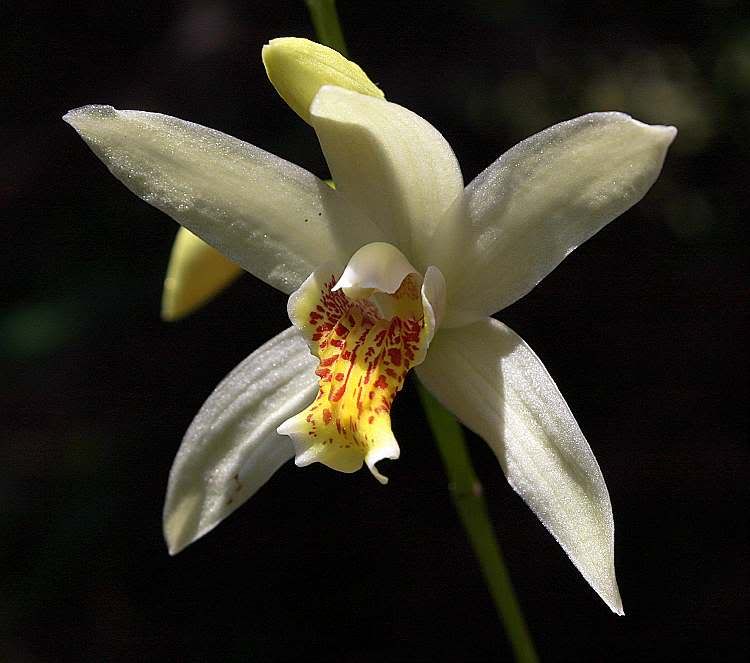
Phaius flavus (AKA P. minor) is a wide ranging species through much of tropical and subtropical Asia. It reaches its northern limit in central Japan. The common flower color is yellow with a burgundy red lip. This white variant is more rare.
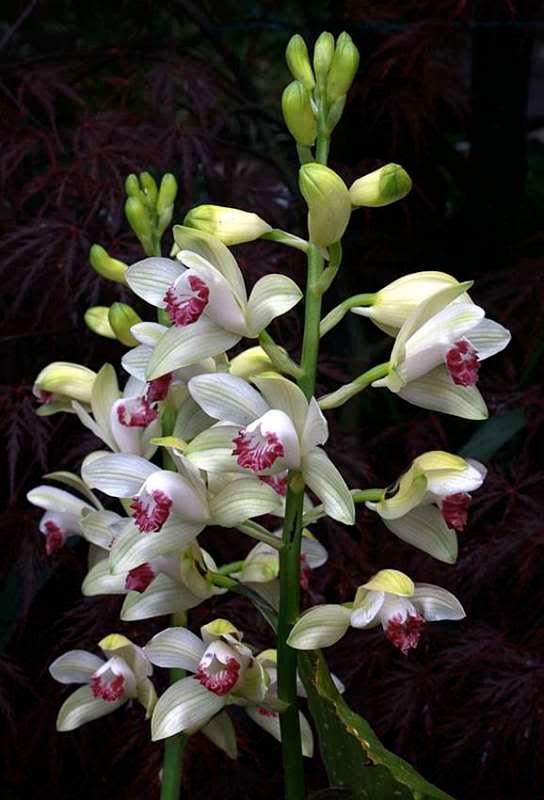
A tiny native standing no more than hand high is Ponerorchis graminifolia (AKA Orchis graminifolia). These used to be common on cliff faces growing as near lithophytes in mossy mats the cover the rock base, but nowadays they are a rare sight in the wild. The issue is over-collection, a common problem with all collectible plants in Japan. A wide range of flowers have been developed over the years, so this one isn't typical per se. This one has a large lip compared to the wild types.
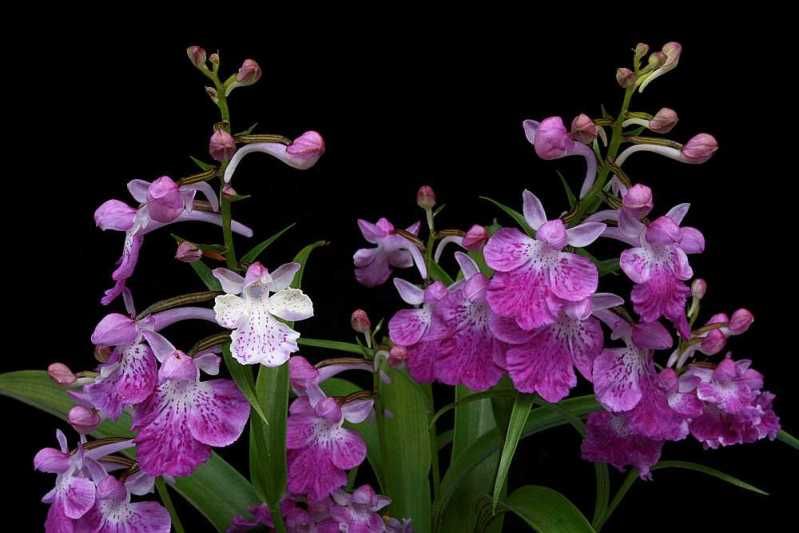
A close relative of P. graminifolia is Amitostigma keiseki. It too was once fairly common, but also has fallen prey to collectors. The Ponerorchis flowers in June and July while this guy is strictly a spring bloomer, mid May usually. Much less variation with these, so this is a fairly typical clone.
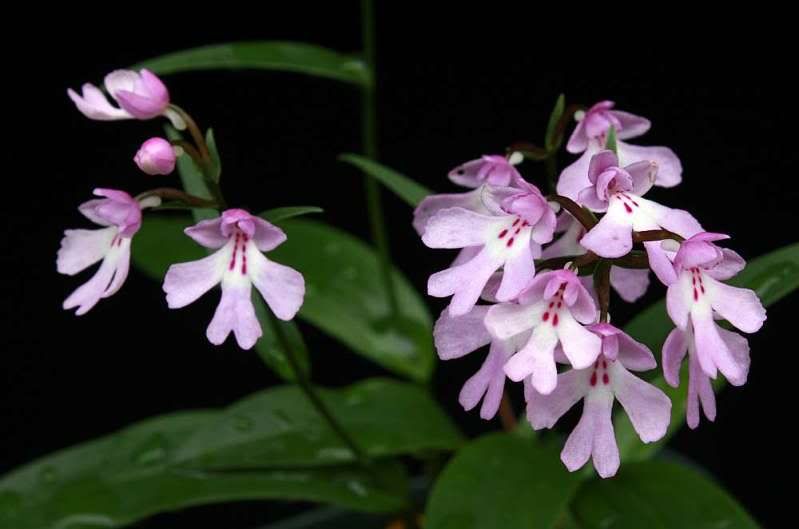
Finally Habenaria radiata, another Japanese native, the famous "egret orchid". I've been calling it Pecteilis radiata for years now, but have been told that it was put back into Habenaria - ah well. It is one of the summer blooming species during the intense heat of August. These variegated leaf forms are fun to watch coming up though. Nowadays it is quite uncommon in the wild, mostly due to habitat loss since many favored sites are now rice patties. It survives in upland bogs and seeps.
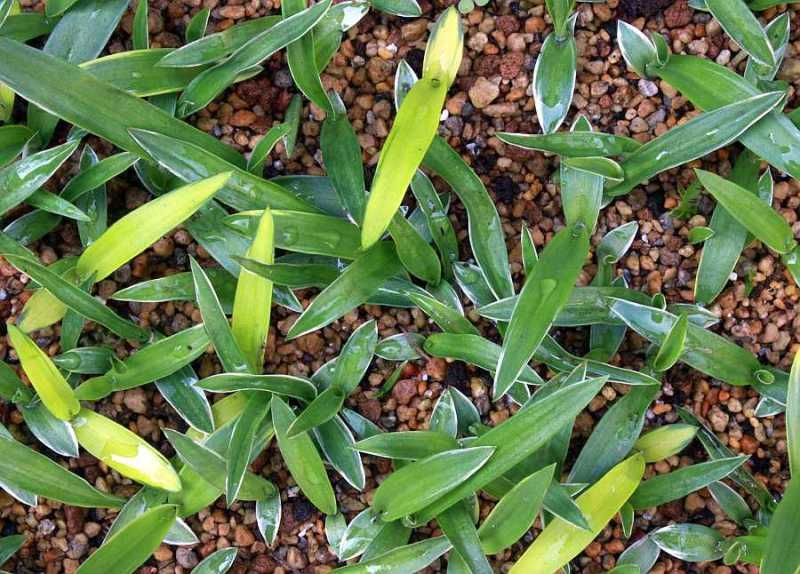
Bletilla ochracea - native of China. This one was bought as a variety from Yunnan Provence. It flowers in late May and early June while all the other plants I have flower in July. Go figure. Color variation on these is extreme - from a muddy reddish-yellow to yellow to nearly white. This one is a nice mellow yellow.

Phaius flavus (AKA P. minor) is a wide ranging species through much of tropical and subtropical Asia. It reaches its northern limit in central Japan. The common flower color is yellow with a burgundy red lip. This white variant is more rare.

A tiny native standing no more than hand high is Ponerorchis graminifolia (AKA Orchis graminifolia). These used to be common on cliff faces growing as near lithophytes in mossy mats the cover the rock base, but nowadays they are a rare sight in the wild. The issue is over-collection, a common problem with all collectible plants in Japan. A wide range of flowers have been developed over the years, so this one isn't typical per se. This one has a large lip compared to the wild types.

A close relative of P. graminifolia is Amitostigma keiseki. It too was once fairly common, but also has fallen prey to collectors. The Ponerorchis flowers in June and July while this guy is strictly a spring bloomer, mid May usually. Much less variation with these, so this is a fairly typical clone.

Finally Habenaria radiata, another Japanese native, the famous "egret orchid". I've been calling it Pecteilis radiata for years now, but have been told that it was put back into Habenaria - ah well. It is one of the summer blooming species during the intense heat of August. These variegated leaf forms are fun to watch coming up though. Nowadays it is quite uncommon in the wild, mostly due to habitat loss since many favored sites are now rice patties. It survives in upland bogs and seeps.




